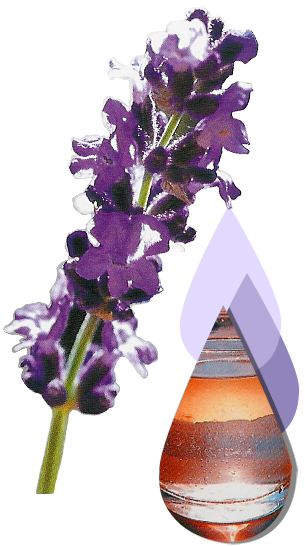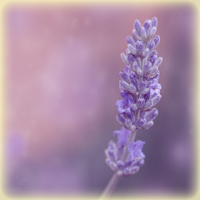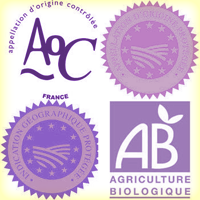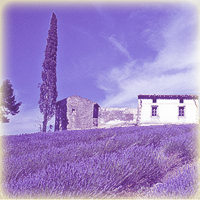Cultivation

Christiane Meunier, Editions Edisud, 1999
Photo : P.-F. Couderc for Clos d'Aguzon
Le matériel végétal :
The traditional technique used to propagate both clonal lavender and lavandin is by cuttings.
Two types of cuttings are possible :
- traditional woody (ligneous) and semi-woody cuttings.
- herbaceous cuttings: tried since the years 1965-1970 in greenhouses but has seen little development in the field because of higher costs.
The woody cutting method is the only one of interest to lavender growers: it is easier to do. It suffices to take a 10-12 cm cutting in the form of a twig containing several branches from a young and healthy plant. This should be done at the end of winter in February or March, before the plant starts its leafy growth.
While waiting to be planted, the cuttings can be stored in a cool cellar, in barrels or in cold storage. The cutting should be placed in rich, well-plowed soil that can be irrigated, necessary for a good start. At each appearance of flowers, the plants should be pruned to equalize growth and avoid mineral depletion.
From the end of autumn to the beginning of spring, well-rooted young plants should be dug up with care to avoid damage to their root systems. Planting is done with a planter in one or several rows in a well prepared plot. The planting machine allows the cutting to be set uniformly with properly compacted soil around the plant for a good recovery, on average 95-98%.
Population lavender plants are produced by seeding in nurseries; planting uses the same machine.
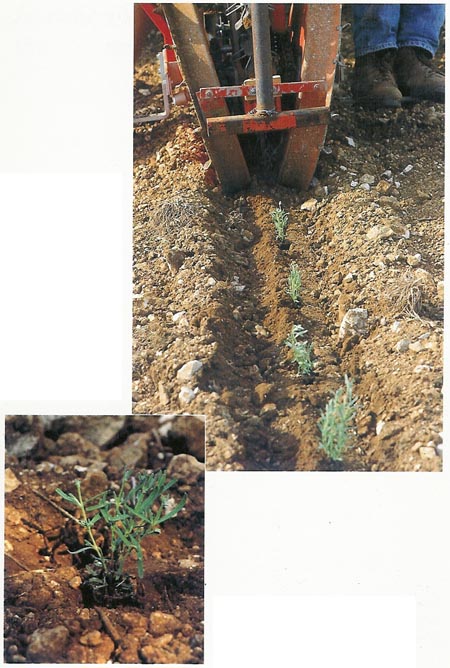
Source : "Lavandes et Lavandins",
Christiane Meunier, Editions Edisud, 1999
There are two types of plantations:
Squared:
for manual harvesting:
done using a mattock
Lavandin density: 4 500 plants per hectare.
Lavender density: 10 000 plants per hectare.
Manual harvesting of squared plantations has almost disappeared with the advent of mechanical harvesting.
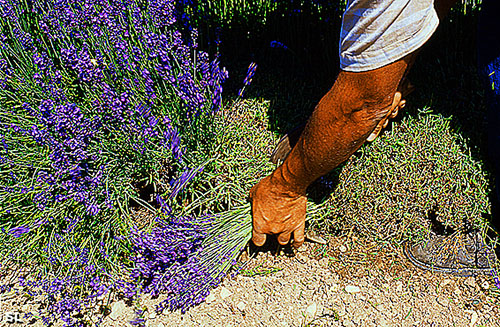
Linear:
Adapted for mechanical harvesting:
done with a planting machine
Lavandin density: 7 to 8 000 plants per hectare.
Lavender density: 12 to 15 000 plants per hectare.
Like all dry cultivations, plantations with wide separations are recommended, each plant thus having a larger share of water available than would a tightly spaced plantation.
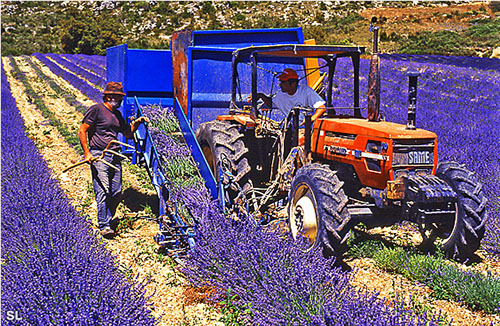

 Weeding
Weeding
The fight against weeds is essential for avoiding competition for available water. Weed growth is detrimental to good plant development.
Weed growth is detrimental to good plant development and can severely affect the composition, especially the olfactory quality of the essential oils.
When planting is done, the soil should be worked to loosen it for better water retention (one hoeing is worth two waterings!).
It is necessary to act as soon as any weeds appear.
The trend today is toward hoeing systems that can work the soil closer to the plants.
It is often necessary, especially for young plantations, to complete the hoeing by hand.
Harvesting:
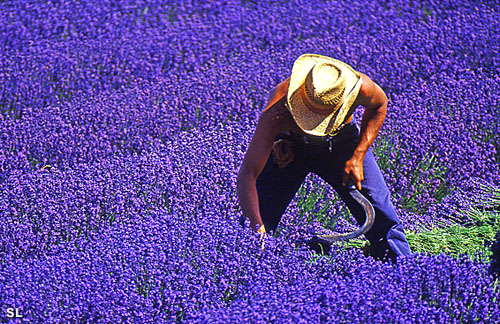

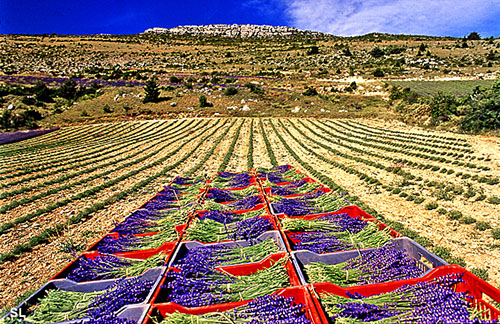
*Photos : Steffen LIPP

Source : Lavandes et Lavandins",
Christiane Meunier, Editions Edisud, 1999
The harvest period takes place in the summer heat that favors the increase of essential oil in the flower’s cells and secretory glands.
The harvesting period extends from the beginning of July for lavender to the end of August for lavandin, depending on variety, altitude and climatic conditions.
Lavender growers must estimate an optimum average harvest period, knowing that after flowering, the plant no longer produces essential oil; rather, it evaporates.
The qualitative composition of the oil also evolves with the extent of flowering inflorescence. The mature stage is determined by agricultural practice, generally when 25-30% of the flowers have faded.
An early harvest, even if it reduces production slightly, sometimes slows plant exhaustion, especially in very dry summers and avoids the loss of dried flowers, insomuch as the cutting operation lasts for a time.
